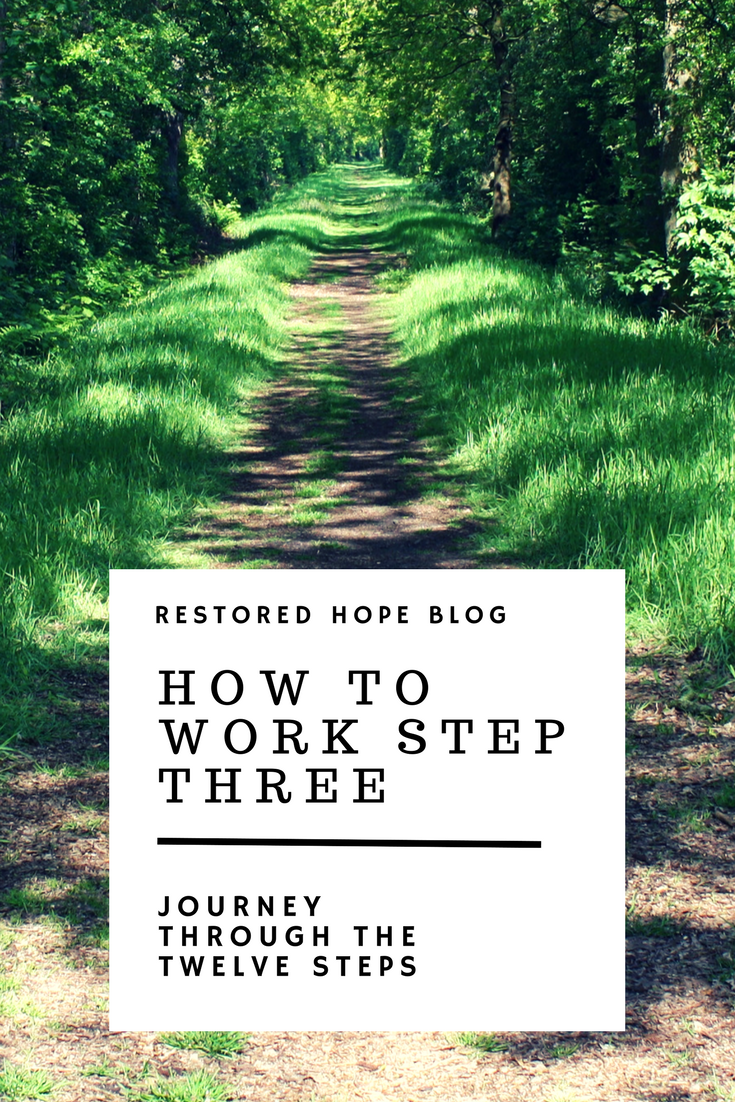This year, we have a monthly series discussing ways to engage and work each of the Twelve Steps. Stemming from the Alcoholics Anonymous tradition, the Twelve Steps have made their way into the treatment of many addictive behaviors. My specific focus will be on sex and love addiction, particularly in Christian women. If you’re interested in finding an in-person, online, or phone meeting for sex and love addiction, check out Sex Addicts Anonymous or Sex and Love Addicts Anonymous. Before you read this post, check out my introduction to the Twelve Steps to learn about support and resources.
Step Twelve: Having had a spiritual awakening as a result of these steps, we tried to carry this message to other addicts, and to practice these principles in all areas of our lives.
Through the work you’ve done in recovering from addiction, it has become clear that addiction is an intimacy disorder. When you are cut off relationally from others, inauthentic with yourself and the people around you, and living a double life, you are unable to be intimate with anyone. In sex and love addiction, disordered intimacy is obvious as you seek addictive behaviors that provide relief from loneliness. Building relationships with others working the 12 Step program and seeking to help them helps create a network of positive, healthy relationships to carry you through your recovery.
As you meet individuals in the beginning of their recovery, you’ll be reminded of your desperation in the early days. By helping them, you’re “paying it forward” from how you’ve been helped. Passing along this work to others is inspiring and encouraging. As an addict who has completed the steps, you are uniquely positioned to help others. You’ve experienced what they’ve been through, and you can communicate that they are not alone.
You’ll also be ready to take the insights you’ve gained from your recovery journey and apply them to all areas of your life, including career and family. Bringing authenticity and openness to all areas of your life allows you integrate your life in a way that is vastly different from your previous double life.
How to Work Step Twelve
Reflect on how you’ve changed since Step One.
How have you become humble as a result of your 12 Step work? Have you learned to admit your faults and failings? What insights have you had about your character weaknesses, and how have they changed the way you live? In what ways have you become more forgiving and less resentful, or more apologetic and quick to ask for forgiveness? How have your relationships changed as a result of the 12 Step work you’ve been doing?
Reflect on some of the work you completed in early steps, looking through old journals or remembering stories you’ve told at meetings. Look for evidence of change in your character. Be grateful for how different you are today than when you started.
Volunteer at a meeting.
You’ve likely seen other group members take roles to help out, whether that involves bringing coffee or snacks, setting up or tearing down chairs, or even leading a meeting. 12 Step groups are intentionally designed without a leader, which means there are many tasks that require volunteers. Ask the trusted servant at your meeting how you might be able to volunteer to help in the upcoming months. Often committing to be a regular attendee of the meetings helps to serve the community by creating consistency for newcomers.
Tell your story.
What do you remember from your first Twelve Step meeting? My guess is it has something to do with the stories of others. If you haven’t already shared your first step with your 12 Step group, consider doing so as a service to other group members. This will allow others to relate to your story. You can also share your story in a one-on-one setting with a new member of the group or sponsee.
Write a list of gifts you have to offer.
Through your recovery process, you may have become aware of talents or abilities that were masked by your addictive behaviors. Your sponsor or other trusted individuals may also be aware of positive traits you have to offer. Ask your sponsor or support people to tell you some gifts they think you bring to the recovery community. Write these affirmations down and review them often. Seek to fill roles within the community that allow these gifts to be used for the good of others.
Sponsor a new member of your group.
At this point, you have the opportunity to turn around and share the insights you’ve learned with a new sponsee. Your insights can help someone else who is struggling with the same questions or doubts in their own journey. But not only will you be helping them: you’ll find that your relationship with your sponsee will often help your own recovery as well.
A few cautions before you start: consider the cost of sponsoring another addict prior to taking on this role. Talk to your sponsor and ask if they’ll serve as a mentor for you with your first few sponsees. It is recommended that you have at least one full year of sobriety under your belt before you sponsor someone, as sponsoring challenges your sobriety in new and unexpected ways. When choosing a sponsee, limit yourself to one person at first, and make sure to choose someone who doesn’t remind you of former acting out partners or trigger addictive thoughts in you.
Attend a retreat or conference.
Changing up the structure of the standard group meeting and receiving inspiration and motivation from time away can help you re-focus on your recovery and learn new tools to help yourself or your sponsees. You may also find yourself motivated to speak or offer your story at a conference. Look for listings of yearly events (like those for SAA or SLAA) and invite a friend from your recovery program to attend with you.
Be conscious of when recovery begins to feel “boring.”
Boredom in your recovery can be a trigger to fall back into the temporary thrill of acting out. When you notice feeling bored or apathetic in your recovery work, explore what’s leading to the boredom. Identify dissatisfaction in your life or avoidance of a thorny issue that’s uncomfortable to think about. Talk with your sponsor about next steps you might take to address these areas.
Another great way to combat boredom is walking through the steps again, perhaps trying out a new sponsor who may have some additional insight. If you’re struggling with more than one addiction, it is helpful to go through the Twelve Steps with the other addiction and see what new insights you can gain.
Carry your new authenticity into all areas of your life, including sexuality.
Is there a major life change that you’ve been putting off, like in your career? Is it difficult to apply your insights from recovery into more mundane, daily tasks? Consider how you might use what you’ve learned in recovery to influence the areas of your life that seem unrelated. You’ll be surprised to find how applicable these skills are in new contexts.
During this time, you might consider what non-addictive sexuality looks like. Resources like a couples counselor or an individual counselor trained in treating addiction can help you in this process. In particular for sex and love addicts, re-integrating healthy sexuality involves a slower journey, learning to embody your masculinity or femininity without necessarily expressing it through sex. Resources like A Couple’s Guide to Intimacy* or Erotic Intelligence* can be helpful tools to explore this area.
The End of the Road?
At this point in your Twelve Step journey, you’ve walked through incredibly difficult steps that have proven to be ultimately rewarding. But moving through the Twelve Steps is meant to be an ongoing process. You have not “arrived” when you reach Step Twelve. Instead, you are called to start back at Step One and examine new areas of your life and well-being that you may not have been aware of when you first began your journey. Continually working through these steps can lead to significant life change. You will gain new perspective as you explore your story in new ways.
Pause for a moment now and recognize moments of happiness and joy you have in your life as a result of recovery. As you acknowledge and express gratitude for these gains, you’ll be motivated to continue. Make a list of all the accomplishments you’ve made while working through the Twelve Steps, and plan a celebration with your sponsor or trusted individuals to celebrate all the hard work you’ve done to get here!





















